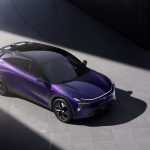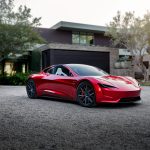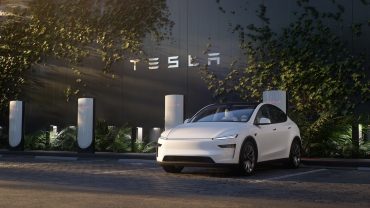
- Earnings
- Magnificent 7
- Mobility Tech
Tesla Q2: $22.5B Revenue, Budget Model, Energy Storage Soars
6 minute read

Tesla’s affordable car model enters production as revenue declines amid shifting focus toward energy storage and robotics development
Key Takeaways
- Revenue drops 12% to $22.5 billion in Q2 2025 as Tesla faces its steepest year-over-year decline in at least a decade, though the company maintains $36.8 billion in cash reserves.
- Affordable Tesla model enters production with first builds completed in June and volume production planned for late 2025, potentially expanding market reach beyond premium segments.
- Energy storage business hits record 9.6 GWh deployment in its 12th consecutive quarter of growth, demonstrating Tesla’s successful diversification beyond automotive revenue.
Introduction
Tesla navigates a challenging transition period as the electric vehicle pioneer reports its steepest revenue decline in over a decade. The company’s Q2 2025 financial results show total revenues falling 12% year-over-year to $22.5 billion, while automotive revenues dropped to $16.7 billion amid declining vehicle deliveries.
Despite these headwinds, Tesla maintains financial stability with $36.8 billion in cash and investments. The company posted positive operating margins of 4.1% and free cash flow of $146 million, providing crucial flexibility during this transition period.
CEO Elon Musk acknowledges the difficulties ahead, warning of “rough” quarters due to shifting tariffs and evolving autonomous vehicle regulations. However, the quarterly update reveals strategic developments that position Tesla for potential recovery and growth diversification.

Key Developments
Tesla completed first builds of its new affordable model in June, marking a significant milestone despite earlier delays. The company plans volume production for the latter half of 2025, with market availability expected by the fourth quarter.
The affordable model resembles the Model Y design but targets price-conscious consumers who previously found Tesla vehicles beyond reach. This product expansion directly addresses longstanding criticism from analysts and customers calling for more accessible Tesla options.
Tesla’s Semi truck program advances toward volume production next year, ending years of development delays. The company simultaneously launched its first Robotaxi service pilot in Austin and announced plans for Bay Area expansion, initially with human drivers pending regulatory approval.
The energy storage division continues its momentum with record deployments of 9.6 GWh in Q2. Tesla plans to open a third Megafactory in Houston next year, supporting growing demand for grid-scale battery solutions.
Market Impact
Tesla’s automotive segment shows strain with vehicle deliveries dropping 13% to 384,122 units. Total GAAP gross margin compressed to 17.2%, reflecting pressure from lower volumes and rising costs including tariff impacts.
The energy generation and storage business achieved its highest gross profit yet, providing a crucial offset to automotive weakness. This segment’s consistent growth over 12 consecutive quarters demonstrates Tesla’s successful diversification strategy.
Free cash flow declined but remained positive at $146 million, while GAAP net income fell 16% to $1.2 billion. Non-GAAP earnings per share reached $0.40, supporting Tesla’s ability to fund ongoing research and development investments.
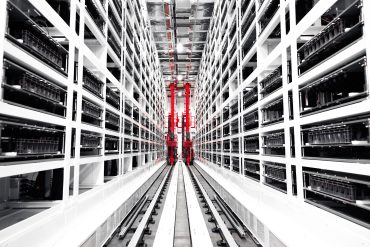
Strategic Insights
Tesla’s transition from pure electric vehicle manufacturer to technology and energy company becomes increasingly evident. The company’s investments in artificial intelligence, robotics, and energy storage create multiple revenue streams beyond traditional automotive sales.
The affordable model launch represents Tesla’s bid to expand market share in competitive mid-market segments. Success could significantly boost delivery volumes, though cannibalization risks exist with existing Model 3 and Model Y sales.
Energy storage emerges as Tesla’s most reliable growth driver, benefiting from global grid modernization and renewable energy adoption. According to CNBC, this diversification strategy mirrors broader tech industry trends toward AI and automation investments.
Tesla’s substantial cash reserves provide competitive advantages during industry uncertainty. While competitors face financing challenges, Tesla can continue investing in next-generation technologies and manufacturing capabilities.
Expert Opinions and Data
Musk characterizes the current environment as a “weird transition period” during the earnings call, citing regulatory uncertainty and macroeconomic pressures. He projects improved long-term economics by late next year as global expansion efforts in India and China gain traction.
CFO Vaibhav Taneja declined to address potential investments in Musk’s AI company xAI, though Musk suggested future shareholder votes on such matters. This highlights ongoing governance questions as Tesla’s scope expands beyond automotive manufacturing.
Musk outlined ambitious robotics plans, targeting one million Optimus robot production annually within five years. He projects robotaxi services reaching half the U.S. population by year-end, though Tesla’s history includes similar timeline delays.
Industry analysts express cautious optimism about Tesla’s resilience amid core market challenges. The company’s technology investments and strong balance sheet position it for leadership across multiple sectors, from automotive to broader technology applications.
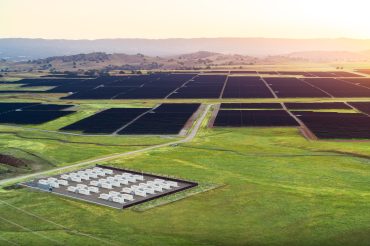
Conclusion
Tesla’s Q2 2025 results demonstrate a company in transition, with record energy division performance offsetting automotive sector challenges. The energy segment’s $846 million profit establishes battery storage as a legitimate growth engine capable of rivaling traditional automotive revenues.
The company’s strategic focus on AI infrastructure, regional manufacturing, and affordable vehicle development positions Tesla for diversified revenue streams. However, execution risks remain significant as Tesla navigates competitive automotive markets while scaling energy operations globally.
Tesla’s financial resilience, supported by $36.8 billion in cash reserves, provides flexibility to invest in multiple growth initiatives simultaneously. The coming quarters will determine whether the energy division’s momentum can sustain overall company growth amid continued automotive market pressures.

